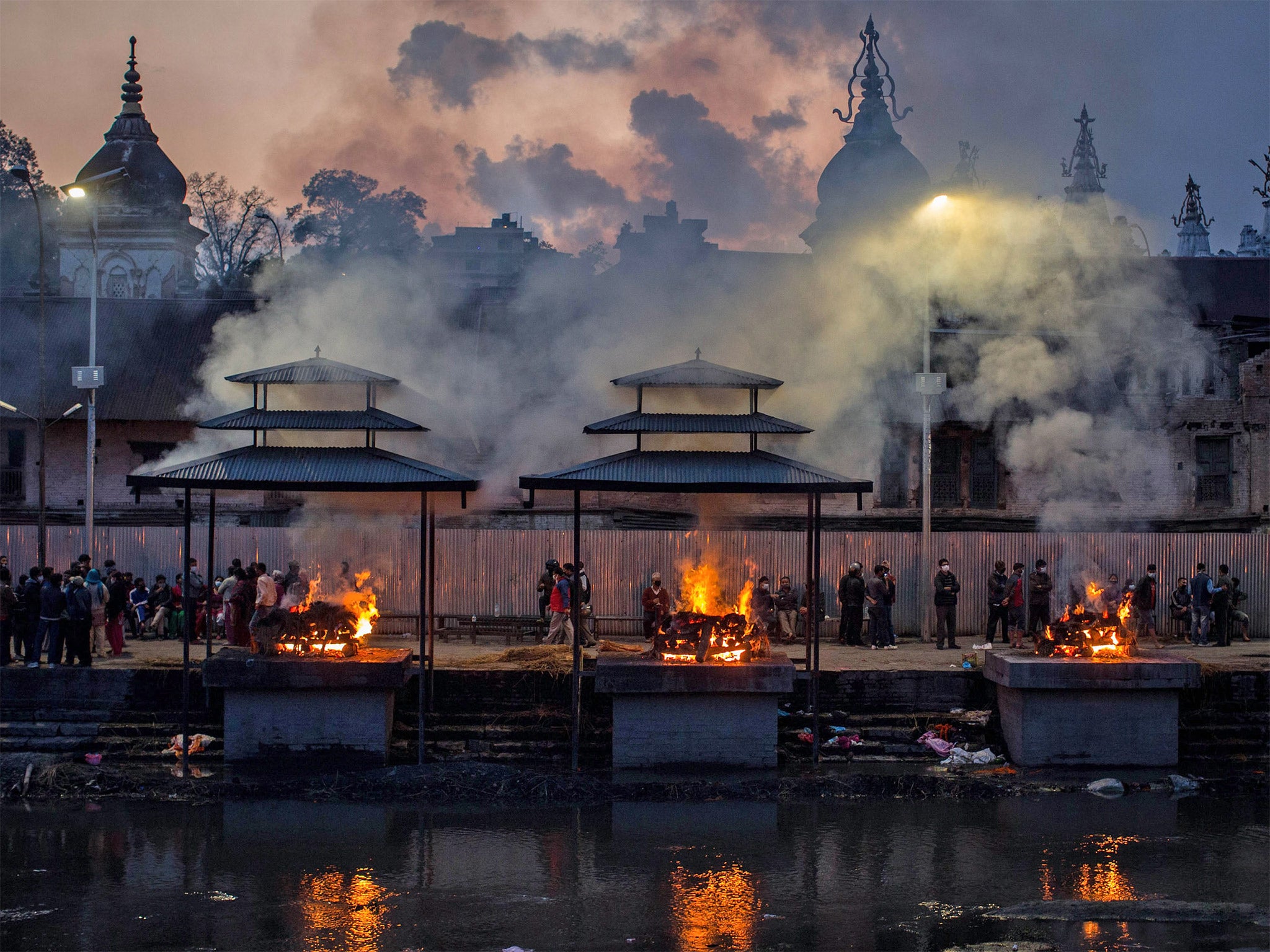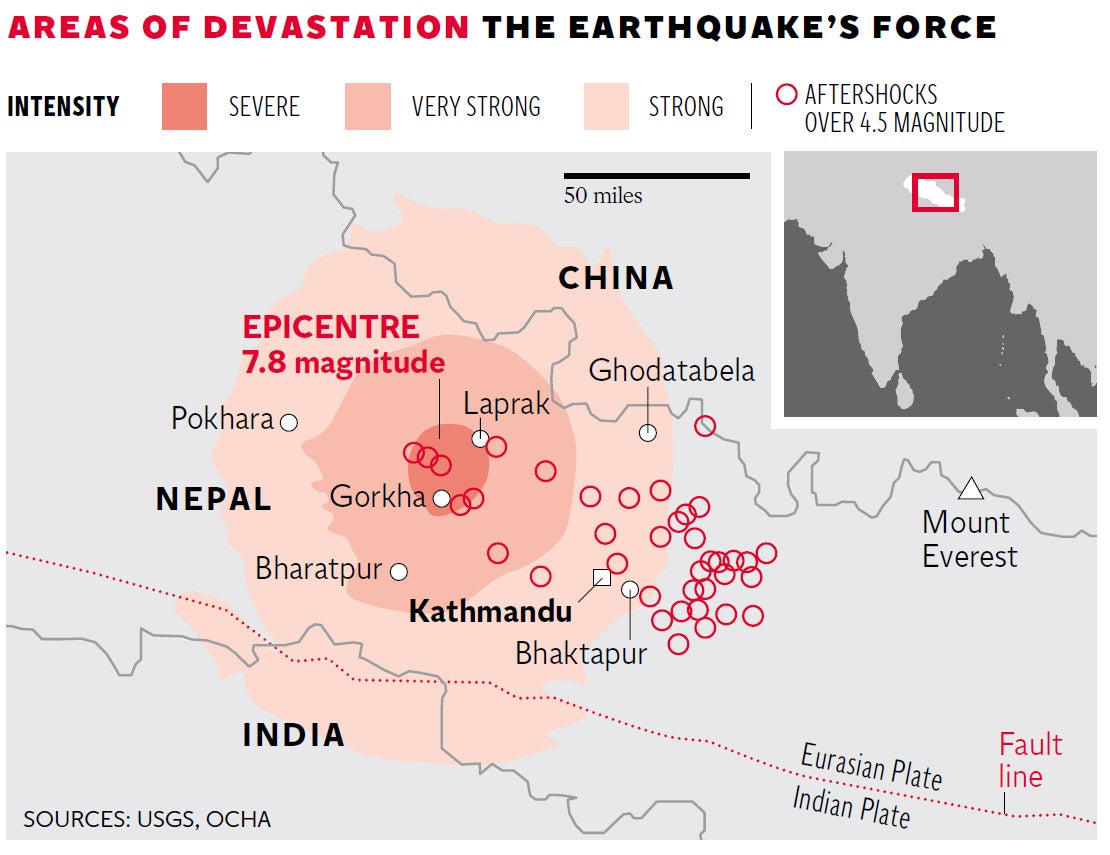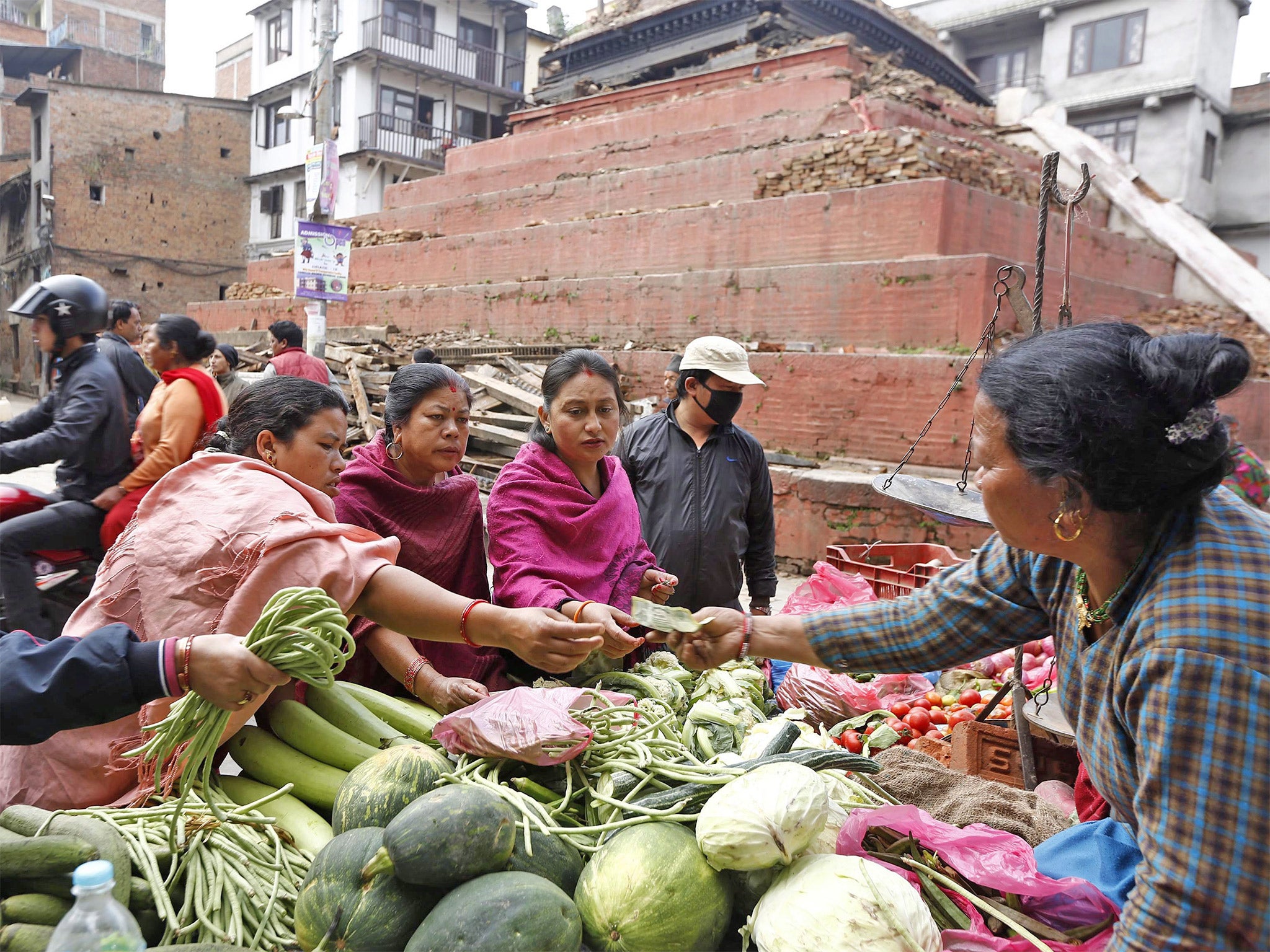Nepal earthquake: Amid all the sadness and death, the talk is of hope and rebirth
Kim Sengupta is humbled by the dignity of the bereaved amid the ordeal of cremating so many victims

At night, from a descending flight, Kathmandu looks as if it has been enveloped by a dark shroud, the result of power cuts that have followed last weekend’s devastating earthquakes. But in one corner of the city, through the blackness, there are lines of bright, shining lights.
The flames reveal the way to the only service now open around the clock in Nepal: the dead from the disaster have been given their funerals, for five days running, on the burning ghats of the Bagmati river.
Bereaved relations, some needing support from friends and family as they weep – some almost trancelike in their shock – wait their turn in the queue to say goodbye to those they have lost.
The dead are brought here so their ashes can be floated on waters which flow into the Ganges, the sacred river of Hinduism. Just how many bodies have become part of this chain of cremation has become a matter of dispute and recriminations. The figure is 600 in Kathmandu, say officials, but many local people dismiss that number as abjectly low, claiming that at least 2,000 have been burned by the Bagmati. The issue has become enmeshed in charges that the authorities are trying to play down the death toll in an attempt to hide their own failure to save lives.
The priests and their helpers at Pashupatinath Temple need temporal knowledge as well as understanding of Hindu scriptures. Precise calculations are needed to keep the line going under such a pressure of numbers. The priests have worked out that it takes four hours to reduce a man’s body to ashes, three for a woman, while the time for a child varies according to age.
The procession will continue. The death toll across the country has now passed 5,200 and will continue to rise as more bodies are dug out, and more of those injured lose the battle against their injuries. The number of unclaimed corpses is also rising: these bodies are kept for 48 hours before being fingerprinted and burned. “Day and night, night and day, that’s how we have been working,” said Raghunath Lal, at the Temple complex, laying out the bundles of cut straw that will be used for the fire. “It should not be like this – there should not be so many following each other so soon.”
For the families of the dead, each parting is tender and special. Laxmi was dressed in a sari of red Benares silk as she lay on the stretcher taking her to the pyre. There was no sign on her calm, pretty face of the pain she suffered at her sad end. “Do you know how old she was? Eighteen. Do you know what it does to a father having to see his daughter lying there dead?” asked Mahesh Gurung, 52, once a proud Gurkha soldier, now a man broken. His brother Mohan gently led him away.
Afterwards, Mohan Gurung talked of sadness and hope, death and rebirth. “Of course it is terrible to see someone you love being taken away – you are angry, you feel it is unfair. That’s how I felt about what happened to my niece,” he said.
“But being here with all these other families makes you realise that you are not alone in your loss. Just a little while ago I saw a father and mother with their dead son. He was a boy, a boy of perhaps six years. What must they feel?”
He waved at the large crowd in colourful clothing which had gathered to watch the cremations. “Death is not a private matter here,” he continued over the blare of conch shells being sounded behind him, as langurs, or tree monkeys, scampered among statues that were hundreds of years old.
“But you know, we are Hindus and we find our religion a great strength. Death is not secret in these ceremonies: at the end you have to accept what has happened. And you must release the spirit to come back again, be reincarnated. What has happened has happened. We must consider the spiritual well-being of the dead.”

There were some who were deeply concerned about what happens to those left behind. Chura Shrestha and his wife, Chetana Lukusshan, were at the ghats for the funeral of cousins, Chandra and Vijaya Shrestha, in Kapon, a town near Kathmandu. “They have a young son and a young daughter who were away when this happened. There are hundreds of others like them. We need to start organising a system to deal with the post-traumatic stress disorder and the other problems all this will mean. We need to reunite the families who have been divided by this terrible thing.”
Dr Shrestha, who has a PhD in conflict resolution, and Ms Lukusshan, who is a child psychologist, are starting to organise sessions, making plans to visit areas that are still cut off. His job, he acknowledges, would help to see this task through: he is a police senior superintendent. Bearing in mind his position, it was surprising to hear his views on what had happened, and about the faults in the system that may have contributed to the slow official reaction.

“We have moved from an autocratic monarchy to a constitutional one, but in the 25 years since 1990 we have had 22 different heads of government. We have instability and we have corruption and nepotism,” he said.
Superintendent Shrestha, who has been in the force for 30 years, was a pioneer of community policing in Nepal, attending courses on the subject at Britain’s police training college at Bramshill, Hampshire. “We have abolished local government,” he said. “If that had not been the case, there would have been help for many people in their own areas after the earthquake – and they wouldn’t have had to make journeys to Kathmandu, some getting killed in the process. Things worked when they were done at community level.”
Shyam Shekhar Jha, director of the Pashupatinath district, which includes the temple complex, was resigned to the apparently endless cremations. “Now we are seeing the dead being brought from villages 20 kilometres away, but soon they will come from greater distances.
“When something like the earthquake happens people naturally turn to religion: they are mourning their dead, but they are also praying to God not to let this happen again.”
Join our commenting forum
Join thought-provoking conversations, follow other Independent readers and see their replies
Comments